LM317 Voltage Regulator[Video+FAQ]: Pinout, Circuit, LM317 VS LM7805 and Datasheet
Adjustable 2.54mm Tin LM317 PMIC 3 TO-220-3
The LM317 is an adjustable voltage linear regulator that can output 1.25 – 37V at up to 1.5A current with an input voltage range of 3–40V. This passage covers the LM317 regulator alternative, datasheet, applications, features, and other information on how to use and where to use this device.

LM317 VOLTAGE REGULATOR Tutorial | How to use? | Pinout
LM317 Overview
LM317 is an adjustable three-terminal regulator. The world's major IC manufacturers have similar products to choose from. Therefore, LM317 is a widely used series of integrated voltage regulators and can be used as a voltage regulator circuit in a DC-regulated power supply.
LM317 Pinout
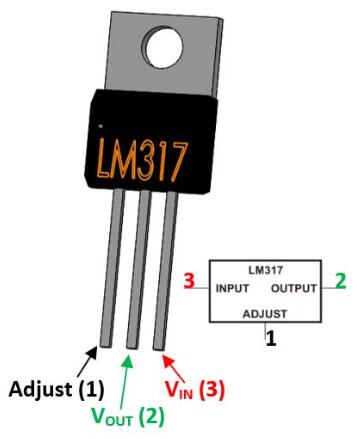
| Pin Number | Pin Name | Description |
| 1 | Adjust | These pins adjust the output voltage |
| 2 | Output Voltage (Vout) | The regulated output voltage set by the adjusted pin can be obtained from this pin |
| 3 | Input Voltage (Vin) | The input voltage which has to be regulated is given to this pin |
Specifications
- TypeParameter
- Lifecycle Status
Lifecycle Status refers to the current stage of an electronic component in its product life cycle, indicating whether it is active, obsolete, or transitioning between these states. An active status means the component is in production and available for purchase. An obsolete status indicates that the component is no longer being manufactured or supported, and manufacturers typically provide a limited time frame for support. Understanding the lifecycle status is crucial for design engineers to ensure continuity and reliability in their projects.
LAST SHIPMENTS (Last Updated: 3 days ago) - Contact Plating
Contact plating (finish) provides corrosion protection for base metals and optimizes the mechanical and electrical properties of the contact interfaces.
Tin - Mount
In electronic components, the term "Mount" typically refers to the method or process of physically attaching or fixing a component onto a circuit board or other electronic device. This can involve soldering, adhesive bonding, or other techniques to secure the component in place. The mounting process is crucial for ensuring proper electrical connections and mechanical stability within the electronic system. Different components may have specific mounting requirements based on their size, shape, and function, and manufacturers provide guidelines for proper mounting procedures to ensure optimal performance and reliability of the electronic device.
Through Hole - Mounting Type
The "Mounting Type" in electronic components refers to the method used to attach or connect a component to a circuit board or other substrate, such as through-hole, surface-mount, or panel mount.
Through Hole - Package / Case
refers to the protective housing that encases an electronic component, providing mechanical support, electrical connections, and thermal management.
TO-220-3 - Number of Pins3
- Weight1.214012g
- Operating Temperature
The operating temperature is the range of ambient temperature within which a power supply, or any other electrical equipment, operate in. This ranges from a minimum operating temperature, to a peak or maximum operating temperature, outside which, the power supply may fail.
0°C~125°C - Packaging
Semiconductor package is a carrier / shell used to contain and cover one or more semiconductor components or integrated circuits. The material of the shell can be metal, plastic, glass or ceramic.
Tube - Published2004
- JESD-609 Code
The "JESD-609 Code" in electronic components refers to a standardized marking code that indicates the lead-free solder composition and finish of electronic components for compliance with environmental regulations.
e3 - Pbfree Code
The "Pbfree Code" parameter in electronic components refers to the code or marking used to indicate that the component is lead-free. Lead (Pb) is a toxic substance that has been widely used in electronic components for many years, but due to environmental concerns, there has been a shift towards lead-free alternatives. The Pbfree Code helps manufacturers and users easily identify components that do not contain lead, ensuring compliance with regulations and promoting environmentally friendly practices. It is important to pay attention to the Pbfree Code when selecting electronic components to ensure they meet the necessary requirements for lead-free applications.
yes - Part Status
Parts can have many statuses as they progress through the configuration, analysis, review, and approval stages.
Obsolete - Moisture Sensitivity Level (MSL)
Moisture Sensitivity Level (MSL) is a standardized rating that indicates the susceptibility of electronic components, particularly semiconductors, to moisture-induced damage during storage and the soldering process, defining the allowable exposure time to ambient conditions before they require special handling or baking to prevent failures
1 (Unlimited) - Number of Terminations3
- ECCN Code
An ECCN (Export Control Classification Number) is an alphanumeric code used by the U.S. Bureau of Industry and Security to identify and categorize electronic components and other dual-use items that may require an export license based on their technical characteristics and potential for military use.
EAR99 - Power Rating
The "Power Rating" of an electronic component refers to the maximum amount of power that the component can handle or dissipate without being damaged. It is typically measured in watts and is an important specification to consider when designing or selecting components for a circuit. Exceeding the power rating of a component can lead to overheating, malfunction, or even permanent damage. It is crucial to ensure that the power rating of each component in a circuit is sufficient to handle the power levels expected during normal operation to maintain the reliability and longevity of the electronic system.
20W - Packing Method
The packing method in electronic components refers to the technique used to package and protect the component during shipping and handling. It encompasses various forms including tape and reel, tray, tube, or bulk packaging, each suited for different types of components and manufacturing processes. The choice of packing method can affect the ease of handling, storage, and the efficiency of assembly in automated processes. Additionally, it plays a crucial role in ensuring the reliability and integrity of the components until they are used in electronic devices.
RAIL - Max Power Dissipation
The maximum power that the MOSFET can dissipate continuously under the specified thermal conditions.
20W - Terminal Position
In electronic components, the term "Terminal Position" refers to the physical location of the connection points on the component where external electrical connections can be made. These connection points, known as terminals, are typically used to attach wires, leads, or other components to the main body of the electronic component. The terminal position is important for ensuring proper connectivity and functionality of the component within a circuit. It is often specified in technical datasheets or component specifications to help designers and engineers understand how to properly integrate the component into their circuit designs.
SINGLE - Peak Reflow Temperature (Cel)
Peak Reflow Temperature (Cel) is a parameter that specifies the maximum temperature at which an electronic component can be exposed during the reflow soldering process. Reflow soldering is a common method used to attach electronic components to a circuit board. The Peak Reflow Temperature is crucial because it ensures that the component is not damaged or degraded during the soldering process. Exceeding the specified Peak Reflow Temperature can lead to issues such as component failure, reduced performance, or even permanent damage to the component. It is important for manufacturers and assemblers to adhere to the recommended Peak Reflow Temperature to ensure the reliability and functionality of the electronic components.
235 - Number of Functions1
- Terminal Pitch
The center distance from one pole to the next.
2.54mm - Time@Peak Reflow Temperature-Max (s)
Time@Peak Reflow Temperature-Max (s) refers to the maximum duration that an electronic component can be exposed to the peak reflow temperature during the soldering process, which is crucial for ensuring reliable solder joint formation without damaging the component.
30 - Base Part Number
The "Base Part Number" (BPN) in electronic components serves a similar purpose to the "Base Product Number." It refers to the primary identifier for a component that captures the essential characteristics shared by a group of similar components. The BPN provides a fundamental way to reference a family or series of components without specifying all the variations and specific details.
LM317 - Pin Count
a count of all of the component leads (or pins)
3 - Number of Outputs1
- Voltage - Input (Max)
Voltage - Input (Max) is a parameter in electronic components that specifies the maximum voltage that can be safely applied to the input of the component without causing damage. This parameter is crucial for ensuring the proper functioning and longevity of the component. Exceeding the maximum input voltage can lead to electrical overstress, which may result in permanent damage or failure of the component. It is important to carefully adhere to the specified maximum input voltage to prevent any potential issues and maintain the reliability of the electronic system.
40V - Output Voltage
Output voltage is a crucial parameter in electronic components that refers to the voltage level produced by the component as a result of its operation. It represents the electrical potential difference between the output terminal of the component and a reference point, typically ground. The output voltage is a key factor in determining the performance and functionality of the component, as it dictates the level of voltage that will be delivered to the connected circuit or load. It is often specified in datasheets and technical specifications to ensure compatibility and proper functioning within a given system.
37V - Output Type
The "Output Type" parameter in electronic components refers to the type of signal or data that is produced by the component as an output. This parameter specifies the nature of the output signal, such as analog or digital, and can also include details about the voltage levels, current levels, frequency, and other characteristics of the output signal. Understanding the output type of a component is crucial for ensuring compatibility with other components in a circuit or system, as well as for determining how the output signal can be utilized or processed further. In summary, the output type parameter provides essential information about the nature of the signal that is generated by the electronic component as its output.
Adjustable - Max Output Current
The maximum current that can be supplied to the load.
1.5A - Output Configuration
Output Configuration in electronic components refers to the arrangement or setup of the output pins or terminals of a device. It defines how the output signals are structured and how they interact with external circuits or devices. The output configuration can determine the functionality and compatibility of the component in a circuit design. Common types of output configurations include single-ended, differential, open-drain, and push-pull configurations, each serving different purposes and applications in electronic systems. Understanding the output configuration of a component is crucial for proper integration and operation within a circuit.
Positive - Max Output Voltage
The maximum output voltage refers to the dynamic area beyond which the output is saturated in the positive or negative direction, and is limited according to the load resistance value.
37V - Number of Regulators
A regulator is a mechanism or device that controls something such as pressure, temperature, or fluid flow. The voltage regulator keeps the power level stabilized. A regulator is a mechanism or device that controls something such as pressure, temperature, or fluid flow.
1 - Min Input Voltage
The parameter "Min Input Voltage" in electronic components refers to the minimum voltage level that must be applied to the component for it to operate within its specified parameters. This value is crucial as providing a voltage below this minimum threshold may result in the component malfunctioning or not functioning at all. It is important to adhere to the specified minimum input voltage to ensure the proper operation and longevity of the electronic component. Failure to meet this requirement may lead to potential damage to the component or the overall system in which it is used.
4.2V - Protection Features
Protection features in electronic components refer to the built-in mechanisms or functionalities designed to safeguard the component and the overall system from various external factors or internal faults. These features are crucial for ensuring the reliability, longevity, and safety of the electronic device. Common protection features include overvoltage protection, overcurrent protection, reverse polarity protection, thermal protection, and short-circuit protection. By activating these features when necessary, the electronic component can prevent damage, malfunctions, or hazards that may arise from abnormal operating conditions or unforeseen events. Overall, protection features play a vital role in enhancing the robustness and resilience of electronic components in diverse applications.
Over Temperature, Short Circuit - PSRR
PSRR stands for Power Supply Rejection Ratio. It is a measure of how well a device, such as an amplifier or a voltage regulator, can reject variations in the power supply voltage. A high PSRR value indicates that the device is able to maintain its performance even when the power supply voltage fluctuates. This parameter is important in ensuring stable and reliable operation of electronic components, especially in applications where the power supply voltage may not be perfectly regulated. A good PSRR helps to minimize noise and interference in the output signal of the device.
75dB ~ 60dB (120Hz) - Reference Voltage
A voltage reference is an electronic device that ideally produces a fixed (constant) voltage irrespective of the loading on the device, power supply variations, temperature changes, and the passage of time. Voltage references are used in power supplies, analog-to-digital converters, digital-to-analog converters, and other measurement and control systems. Voltage references vary widely in performance; a regulator for a computer power supply may only hold its value to within a few percent of the nominal value, whereas laboratory voltage standards have precisions and stability measured in parts per million.
1.3V - Dropout Voltage
Dropout voltage is the input-to-output differential voltage at which the circuit ceases to regulate against further reductions in input voltage; this point occurs when the input voltage approaches the output voltage.
2V - Dropout Voltage1-Nom
Dropout Voltage1-Nom is a parameter commonly found in voltage regulators and power management ICs. It refers to the minimum voltage difference required between the input voltage and the output voltage for the regulator to maintain regulation. In other words, it is the minimum voltage drop that the regulator can handle while still providing a stable output voltage. This parameter is important to consider when designing power supply circuits to ensure that the regulator can operate within its specified voltage range and maintain proper regulation under varying load conditions.
3V - Min Output Voltage
Min Output Voltage refers to the lowest voltage level that an electronic component, such as a voltage regulator or power supply, can provide reliably under specified conditions. It indicates the minimum threshold required for proper operation of connected devices. Operating below this voltage may lead to device malfunction or failure to operate as intended.
1.2V - Power Supply Rejection Ratio (PSRR)
Power Supply Rejection Ratio (PSRR) is a measure of how well an electronic component, such as an operational amplifier or voltage regulator, can reject changes in its supply voltage. It indicates the ability of the component to maintain a stable output voltage despite fluctuations in the input supply voltage. A higher PSRR value signifies better performance in rejecting noise and variations from the power supply, leading to improved signal integrity and more reliable operation in electronic circuits. PSRR is typically expressed in decibels (dB).
60dB - Min Current Limit
Min Current Limit is a parameter in electronic components that refers to the minimum amount of current that must flow through the component to ensure proper operation. This parameter is important because if the current falls below this limit, the component may not function as intended or may even be damaged. Manufacturers specify the minimum current limit to help users understand the operating conditions and limitations of the component. It is crucial to ensure that the current flowing through the component remains above the specified minimum limit to maintain its performance and reliability.
1.5A - Load Regulation-Max(%)
Load Regulation-Max(%) is a measure of how much the output voltage of a power supply or voltage regulator changes in response to variations in load current. It is expressed as a percentage of the nominal output voltage and indicates the maximum deviation from the set voltage when the load shifts from no load to full load. A lower value of load regulation signifies better performance, as it indicates that the output voltage remains stable under varying load conditions.
5.8% - Height9.15mm
- Length10.4mm
- Width4.6mm
- REACH SVHC
The parameter "REACH SVHC" in electronic components refers to the compliance with the Registration, Evaluation, Authorization, and Restriction of Chemicals (REACH) regulation regarding Substances of Very High Concern (SVHC). SVHCs are substances that may have serious effects on human health or the environment, and their use is regulated under REACH to ensure their safe handling and minimize their impact.Manufacturers of electronic components need to declare if their products contain any SVHCs above a certain threshold concentration and provide information on the safe use of these substances. This information allows customers to make informed decisions about the potential risks associated with using the components and take appropriate measures to mitigate any hazards.Ensuring compliance with REACH SVHC requirements is essential for electronics manufacturers to meet regulatory standards, protect human health and the environment, and maintain transparency in their supply chain. It also demonstrates a commitment to sustainability and responsible manufacturing practices in the electronics industry.
No SVHC - Radiation Hardening
Radiation hardening is the process of making electronic components and circuits resistant to damage or malfunction caused by high levels of ionizing radiation, especially for environments in outer space (especially beyond the low Earth orbit), around nuclear reactors and particle accelerators, or during nuclear accidents or nuclear warfare.
No - RoHS Status
RoHS means “Restriction of Certain Hazardous Substances” in the “Hazardous Substances Directive” in electrical and electronic equipment.
RoHS Compliant - Lead Free
Lead Free is a term used to describe electronic components that do not contain lead as part of their composition. Lead is a toxic material that can have harmful effects on human health and the environment, so the electronics industry has been moving towards lead-free components to reduce these risks. Lead-free components are typically made using alternative materials such as silver, copper, and tin. Manufacturers must comply with regulations such as the Restriction of Hazardous Substances (RoHS) directive to ensure that their products are lead-free and environmentally friendly.
Lead Free
LM317 CAD Models
Symbol

Footprint
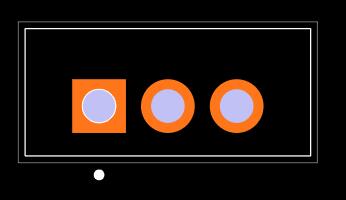
3D Models
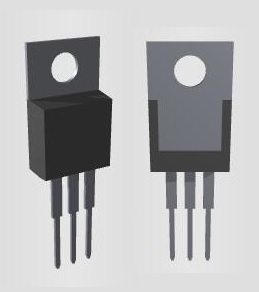
LM317 Features
Output voltage range adjustable from 1.25V to 37V
Output current greater than 1.5A
Internal short-circuit current limiting
Thermal overload protection
Output safe-area compensation
LM317 Applications
Used for Positive voltage regulations
Variable power supply
Current limiting circuits
Reverse polarity circuits
Commonly used in Desktop PC, DVDs, and other consumer products
Used in motor control circuits
LM317 Equivalents
Where to use LM317?
When it comes to variable voltage control, the LM317 is almost certainly the top choice. It can be used as a variable voltage regulator, a fixed voltage regulator, a current limiter, a battery charger, an AC voltage regulator, and even an adjustable current regulator. One significant disadvantage of this IC is that it has a voltage drop of roughly 2.5 across it during regulation, so if you want to avoid that problem, look into the other equivalent ICs listed above.
So, if you need a variable voltage regulator that can supply current up to 1.5A, this regulator IC could be a good fit for your application.
How to use LM317?
LM317 is a 3-terminal regulator IC and it is very simple to use. It has many application circuits in its datasheet, but this IC is known for being used as a variable voltage regulator. So, let’s look into how to use this IC as a variable voltage regulator.
As said earlier the IC has 3 pins, in which the input voltage is supplied to pin3 (VIN) then using a pair of resistors (potential divider) we set a voltage at pin 1 (Adjust) which will decide the output voltage of the IC that is given out at pin 2 (VOUT). Now to make it act as a variable voltage regulator we have to set variable voltages at pin 1 which can be done by using a potentiometer in the potential divider. The below circuit is designed to take 12V (you can supply up to 24V) as input and regulate it from 1.25V to 10V.

The Resistor R1 (1K) and the potentiometer (10k) together create a potential difference in adjusting the pin which regulates the output pin accordingly. The formulae to calculate the output voltage based on the value of resistors is
VOUT = 1.25 × (1 + (R2/R1))
Now, let’s verify this formula for the above circuit. The value of R1 is 1000 ohms and the value of R2 (potentiometer) is 5000 because it is a 10k potentiometer placed at 50% (50/100 of 1000 is 5000).
Vout = 1.25 × (1 + (5000/1000))
= 1.25 × 6
= 7.5V
And the simulation shows 7.7V which is pretty much close. You can vary the output voltage by simply varying the potentiometer. In our circuit, a motor is connected as a load that consumes around 650mA you can connect any load up to 1.5A.
The same formulae can also be used to calculate the value of the resistor for your required output voltage. One easy way to do this is to use this online calculator to randomly substitute the value of resistors you have and check which output voltage you will get.
LM317 VS LM7805
LM317 is an adjustable voltage regulator, while LM7805 is the constant voltage regulator.
LM317 can give an adjustable output voltage in the range of 1.5V to 37V, whereas LM7805 can only give an output voltage of 5V.
What’s more, LM317 has the capability to give an output current of more than 1.5A whereas LM7805 can only give an output current only up to 1.5A.
LM317 requires more external components (adjustment pot or precision resistors to set the voltage divider etc.) as compared to the LM7805.
Recommended Article:
Is LM317 better than LM7805?[video+FAQ]
LM258P Low Power Dual Bipolar Op-amps: Description, Features, and Applications
LM317AT-Linear Voltage Regulators 3-TERMINAL ADJ REG
Trend Analysis
Datasheet PDF
- PCN Obsolescence/ EOL :
- Datasheets :
LM317T-ON-Semiconductor-datasheet-14168796.pdf
LM317T-ON-Semiconductor-datasheet-86697478.pdf
LM317T-ON-Semiconductor-datasheet-16807794.pdf
LM317T-Fairchild-Semiconductor-datasheet-11477961.pdf
LM317T-Fairchild-datasheet-8477903.pdf
LM317T-Fairchild-datasheet-81274.pdf
LM317T-ON-Semiconductor-datasheet-70969.pdf
pid_5535802_lm317t-stmicroelectronics-datasheet-28963883.pdf
- PCN Design/Specification :
- ReachStatement :
- PCN Packaging :
Parts with Similar Specs
- ImagePart NumberManufacturerPackage / CaseNumber of PinsNumber of OutputsMax Output CurrentMin Input VoltageVoltage - Input (Max)Min Output VoltageOutput VoltageMax Output VoltageVoltage - Output (Max)Dropout VoltageView Compare
LM317T
TO-220-3
3
1
1.5 A
4.2 V
40V
1.2 V
37 V
37 V
37V
2 V
TO-220-3
3
1
1.5 A
4.2 V
40V
1.25 V
37 V
37 V
-
2 V
TO-220-3
3
1
1.5 A
4.2 V
40V
1.2 V
37 V
37 V
37V
-
TO-220-3
3
1
1.5 A
4.2 V
40V
1.2 V
37 V
37 V
37V
-
TO-220-3
3
1
1.5 A
4.2 V
40V
1.25 V
37 V
37 V
-
2 V
How does LM317 work?
An LM317 is a voltage regulator that can supply variable output voltage. The working principle of the LM317 is very simple. It uses a voltage divider, formed by using two external resistors connected in series. The output voltage is adjusted by varying the resistor values.
What is a LM317 used for?
The LM317 is commonly used as: 1. A voltage regulator in electronic devices to provide a stable output voltage. 2. A precision current regulator to provide constant current. 3. In designing battery charger circuits and variable power supplies.
What is the maximum input voltage of a LM317?
The maximum input voltage of LM317 is 40 V. The LM317 can operate as long as the difference between its input voltage and the desired output voltage is in the range of 3-40 V.
What is the output voltage of a LM317?
The LM317 can provide an adjustable output voltage between 1.25 V and 37 V. It can supply current up to 1.5 A.
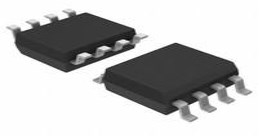 MX25V1635FM1I Flash Memory: Features, Pinout, and Datasheet
MX25V1635FM1I Flash Memory: Features, Pinout, and Datasheet18 March 20221060
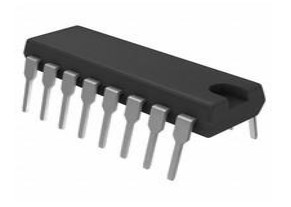 ULN2001A Transistor Array: Pinout, Equivalent and Datasheet
ULN2001A Transistor Array: Pinout, Equivalent and Datasheet30 November 20212141
 1N5818 Schottky Diode: Pinout, Datasheet, and Equivalents
1N5818 Schottky Diode: Pinout, Datasheet, and Equivalents03 September 20213675
 A Guide to TPS55340RTER DC-DC Converter
A Guide to TPS55340RTER DC-DC Converter21 March 20222644
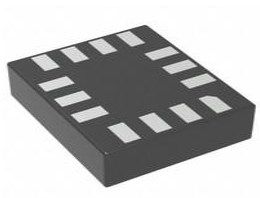 LSM6DS3 Accelerometer/ Gyroscope: Datasheet, Pinout and Features
LSM6DS3 Accelerometer/ Gyroscope: Datasheet, Pinout and Features19 August 20214637
 Exploring the ADuC7030/ADuC7033 Integrated Precision Battery Sensor for Automotive
Exploring the ADuC7030/ADuC7033 Integrated Precision Battery Sensor for Automotive29 February 2024116
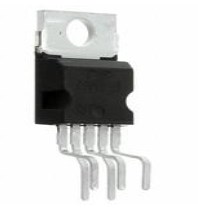 TDA2030A: 22 kHz, 80mA, Pinout and Datasheet
TDA2030A: 22 kHz, 80mA, Pinout and Datasheet27 April 20224867
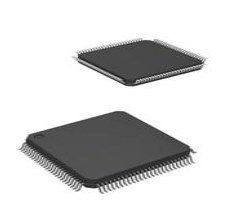 STM32F427VIT6: 180MHz, 100-LQFP, Pinout and Datasheet
STM32F427VIT6: 180MHz, 100-LQFP, Pinout and Datasheet28 February 20223936
 What is a MOSFET?
What is a MOSFET?16 April 20215137
 Electronic components distributor UTMEL to Showcase at electronica China
Electronic components distributor UTMEL to Showcase at electronica China07 June 20242506
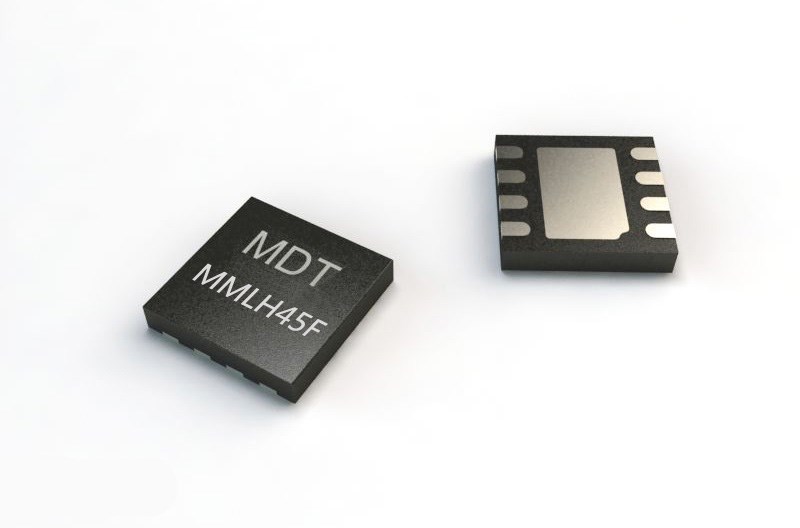 Working Principle and Development of Magnetic Sensors
Working Principle and Development of Magnetic Sensors31 October 20253509
 The History of Thermometers
The History of Thermometers13 January 202213490
 Things You Need to Know about Seven-segment Display
Things You Need to Know about Seven-segment Display14 October 20216580
 How are Integrated Circuits produced?
How are Integrated Circuits produced?20 October 202524537
 Hydrogen Fuel Cell: Features, Working and Applications
Hydrogen Fuel Cell: Features, Working and Applications21 June 20215957
 The Introduction to QFN Package
The Introduction to QFN Package15 October 20256302
ON Semiconductor
In Stock: 1855
United States
China
Canada
Japan
Russia
Germany
United Kingdom
Singapore
Italy
Hong Kong(China)
Taiwan(China)
France
Korea
Mexico
Netherlands
Malaysia
Austria
Spain
Switzerland
Poland
Thailand
Vietnam
India
United Arab Emirates
Afghanistan
Åland Islands
Albania
Algeria
American Samoa
Andorra
Angola
Anguilla
Antigua & Barbuda
Argentina
Armenia
Aruba
Australia
Azerbaijan
Bahamas
Bahrain
Bangladesh
Barbados
Belarus
Belgium
Belize
Benin
Bermuda
Bhutan
Bolivia
Bonaire, Sint Eustatius and Saba
Bosnia & Herzegovina
Botswana
Brazil
British Indian Ocean Territory
British Virgin Islands
Brunei
Bulgaria
Burkina Faso
Burundi
Cabo Verde
Cambodia
Cameroon
Cayman Islands
Central African Republic
Chad
Chile
Christmas Island
Cocos (Keeling) Islands
Colombia
Comoros
Congo
Congo (DRC)
Cook Islands
Costa Rica
Côte d’Ivoire
Croatia
Cuba
Curaçao
Cyprus
Czechia
Denmark
Djibouti
Dominica
Dominican Republic
Ecuador
Egypt
El Salvador
Equatorial Guinea
Eritrea
Estonia
Eswatini
Ethiopia
Falkland Islands
Faroe Islands
Fiji
Finland
French Guiana
French Polynesia
Gabon
Gambia
Georgia
Ghana
Gibraltar
Greece
Greenland
Grenada
Guadeloupe
Guam
Guatemala
Guernsey
Guinea
Guinea-Bissau
Guyana
Haiti
Honduras
Hungary
Iceland
Indonesia
Iran
Iraq
Ireland
Isle of Man
Israel
Jamaica
Jersey
Jordan
Kazakhstan
Kenya
Kiribati
Kosovo
Kuwait
Kyrgyzstan
Laos
Latvia
Lebanon
Lesotho
Liberia
Libya
Liechtenstein
Lithuania
Luxembourg
Macao(China)
Madagascar
Malawi
Maldives
Mali
Malta
Marshall Islands
Martinique
Mauritania
Mauritius
Mayotte
Micronesia
Moldova
Monaco
Mongolia
Montenegro
Montserrat
Morocco
Mozambique
Myanmar
Namibia
Nauru
Nepal
New Caledonia
New Zealand
Nicaragua
Niger
Nigeria
Niue
Norfolk Island
North Korea
North Macedonia
Northern Mariana Islands
Norway
Oman
Pakistan
Palau
Palestinian Authority
Panama
Papua New Guinea
Paraguay
Peru
Philippines
Pitcairn Islands
Portugal
Puerto Rico
Qatar
Réunion
Romania
Rwanda
Samoa
San Marino
São Tomé & Príncipe
Saudi Arabia
Senegal
Serbia
Seychelles
Sierra Leone
Sint Maarten
Slovakia
Slovenia
Solomon Islands
Somalia
South Africa
South Sudan
Sri Lanka
St Helena, Ascension, Tristan da Cunha
St. Barthélemy
St. Kitts & Nevis
St. Lucia
St. Martin
St. Pierre & Miquelon
St. Vincent & Grenadines
Sudan
Suriname
Svalbard & Jan Mayen
Sweden
Syria
Tajikistan
Tanzania
Timor-Leste
Togo
Tokelau
Tonga
Trinidad & Tobago
Tunisia
Turkey
Turkmenistan
Turks & Caicos Islands
Tuvalu
U.S. Outlying Islands
U.S. Virgin Islands
Uganda
Ukraine
Uruguay
Uzbekistan
Vanuatu
Vatican City
Venezuela
Wallis & Futuna
Yemen
Zambia
Zimbabwe
















